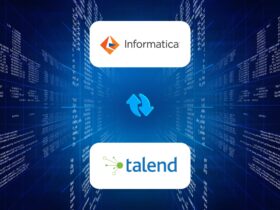
The world of software development is on the brink of transformation with the emergence of Generative AI.
This cutting-edge technology is set to reshape coding practices, presenting an array of compelling benefits.
It boosts productivity, improves code quality, and enhances accessibility. In this new era of software creation, Generative AI’s promise lies in its ability to combine creativity with efficiency.
Lets Deep dive into Generative AI.
What is Generative AI?
Generative AI, a remarkable subset of artificial intelligence, has taken the tech world by storm. It possesses the unique ability to create diverse content, spanning text, images, audio, and synthetic data.
This innovative technology operates by learning intricate patterns and structures from its training data and then employs this knowledge to generate new data resembling the patterns it has learned.
In the coding field, generative AI has transformative potential. It can automate mundane, repetitive coding tasks, liberating developers to engage in more creative endeavours.
For instance, it can generate boilerplate code, propose code enhancements, and even translate code from one language to another. This not only boosts productivity but also elevates the quality of code by identifying errors and suggesting improvements. Developers can harness this technology to craft innovative, efficient solutions.
The benefits of integrating generative AI into coding are significant. It enhances productivity, reduces errors, and nurtures a culture of creativity.
Moreover, a staggering 75% of generative AI users are looking to automate tasks at work and use generative AI for work communications. This statistic underscores the practical application of generative AI in the workplace, where it streamlines work-related tasks and facilitates effective work-related communications.
Currently, a variety of Generative AI tools, such as GitHub Copilot, Tabnine, and Replit GhostWriter, are making waves in the coding landscape.
GitHub Copilot, for instance, provides real-time code suggestions and can even generate entire functions based on natural language descriptions. Tabnine offers code suggestions, language translation, and more.
As these tools evolve, we can anticipate a revolution in how we approach and execute coding tasks. The future is bright, with the promise of even more potent and innovative Generative AI tools waiting to be developed.
Different Types Of Auto Code Generators
Auto code generators are instrumental in simplifying and expediting the software development process. They come in different types, each with its own unique approach and benefits:
1. Template-based Generators:
How they work: Template-based generators use predefined templates written in a specific programming language’s syntax. These templates outline the fundamental structure of the code to be generated, including variables.
Strengths: They are relatively user-friendly and versatile, capable of generating a wide range of code. Developers fill in the template’s variables with the required values.
Considerations: Maintenance can be challenging, and errors may arise if templates are not well-designed.
2. Model-driven Generators:
How they work: Model-driven generators employ models created through graphical user interfaces (GUIs). These models define the entities, relationships, and attributes of the system under development. The generator then translates the model into code.
Strengths: They excel in reducing errors and ensuring code consistency, making them suitable for complex projects.
Considerations: They can be complex to use and require a significant investment of time for model creation and maintenance.
3. AI-powered Generators:
How they work: AI-powered generators represent a cutting-edge approach. They leverage artificial intelligence (AI) to generate code by learning patterns and structures from existing code. This knowledge is then applied to create new code.
Strengths: They have the potential to revolutionise coding by eliminating the need for templates or models. They adapt to various coding scenarios.
Considerations: These generators are still in development and can occasionally produce less reliable code or code that is challenging to understand and maintain.
Examples of popular auto code generators include Eclipse Templates and IntelliJ IDEA Live Templates for template-based generation, JHipster and Spring Boot Initializr for model-driven generation, and GitHub Copilot and Tabnine for AI-powered code generation.
Various Software Languages Supported By All Code Generators.
Most code generators support a variety of software languages, including:
- Java
- Python
- JavaScript
- C/C++
- Go
- PHP
- Ruby
- C#
- VB.NET
- Swift
- Kotlin
Some code generators also support more specialised languages, such as SQL, HTML, and XML.
Here are some examples of code generators that support multiple software languages:
- JHipster: Java, JavaScript, Python, Kotlin, Go
- Spring Initializr: Java, JavaScript, Kotlin
- Rails Generators: Ruby
- Eclipse Templates: Java, C/C++, JavaScript, PHP, Python, and more
- Visual Studio Code Snippets: C/C++, JavaScript, PHP, Python, and more
The specific languages supported by a code generator will vary depending on the generator. It is important to check the documentation for the generator you are interested in to see what languages it supports.
How Can Enterprises Make Use Of These Advancements W/O Compromising Security And Intellectual Property?
Enterprises can harness the power of code generators while safeguarding security and protecting intellectual property through a set of clear and practical guidelines:
Vendor Reliability: Begin by selecting a code generator from a trusted vendor. This ensures the generator’s security and minimises the risk of vulnerabilities.
Thorough Understanding: Delve into the code generator’s documentation and explore its security features. This comprehensive understanding is key to using the tool securely.
Secure Usage Environment: Deploy the code generator within a secure environment. Isolate it from the broader development setup and implement robust access controls to prevent unauthorised use.
Regular Evaluation: Continuously review and test the code generated by the tool. This ongoing evaluation helps identify and rectify any security vulnerabilities.
In addition to these fundamental guidelines, enterprises should consider the following measures:
Sandbox for Safety: Establish a sandbox environment for development and testing. This sandbox setup effectively isolates the code generator, reducing the risk of security breaches.
Secure Code Repository: Safeguard the generated code by storing it in a secure code repository. This ensures that it remains protected from unauthorised access and alterations.
Developer Awareness: Educate your developers about the security risks associated with code generators. Awareness of potential vulnerabilities in generated code and proactive steps to address them are essential.
For enhanced security and intellectual property protection, consider these additional strategies:
Access Control: Implement a licence management system to control access to the code generator. This ensures that only authorised users can utilise the tool.
Code Review Process: Before deploying generated code to production, institute a thorough code review process. This step helps uncover and rectify any security vulnerabilities or intellectual property concerns.
Ownership Tracking: Employ a watermarking tool to embed a unique identifier in the generated code. This serves as a valuable mechanism for tracking code ownership and preventing unauthorised usage.
By adhering to these practical guidelines and strategies, enterprises can fully leverage the benefits of code generators while upholding security and safeguarding intellectual property.
Open source Code Generators vs. tools owned by hyper scalers (AWS, GCP and Azure). Pro & Cons.
Free Code Generators:
- JHipster
- Spring Initializr
- Rails Generators
- Eclipse Templates
- Visual Studio Code Snippets
Pros:
Free to Use and Customise: These code generators are freely accessible and allow for modifications to suit your specific needs.
Transparency and Security: They offer transparency in their operations and are considered secure for your coding projects.
Community Support: Benefit from a community of users who can provide assistance and guidance.
Cons:
Limited Features: Free code generators may not offer as extensive features as their commercial counterparts.
Support May Vary: They may not receive the same level of comprehensive support as commercial options.
Code Generators Owned by Hyper Scalers (AWS, GCP, and Azure):
- AWS Amplify
- Azure DevOps Code Generator
- Google Cloud Client Libraries
Pros:
Feature-Rich: Code generators under the ownership of hyper scalers often come with a wider array of features and capabilities.
Strong Support: They typically receive robust support from the hyper scaler, ensuring reliability.
Integration Potential: These generators can seamlessly integrate with other services offered by the hyper scaler.
Cons:
Cost: They are not free to use and may involve licensing fees.
Transparency and Security: Compared to free options, they may not be as transparent or secure.
Vendor Lock-In: Users may find themselves tied to a specific vendor due to these generators.
The choice between these code generator types hinges on your unique requirements. If you prefer an open-source, cost-free solution with customization options, the free code generators listed above are a viable starting point.
On the other hand, if you demand an extensive feature set, robust support, and potential integration with hyper scaler services, code generators owned by hyper scalers may better suit your needs.
Comparison Of Different Auto Code Generators
| Code Generator | Features | Use Case | Pricing |
| OpenAI Codex | Generates code, translates languages, writes different kinds of creative content | Can be used for software development, creative writing, and translation | Free |
| Tabnine | Provides code completion suggestions based on the context of the code;
can also generate code from natural language descriptions |
Can be used for software development | Paid |
| Polycoder | Can generate code from scratch or refactor existing code; can also detect potential errors and security vulnerabilities | Can be used for software development, code refactoring, and code analysis | Paid |
| GitHub Copilot | Provides code completion suggestions based on the context of the code; can also generate code from natural language descriptions; is integrated with GitHub Code | Can be used to automate software development tasks | Paid |
| AWS Codewhisperer | The tool offers code completion and generation suggestions, conducts security scans, and tracks references. | It supports software development, facilitates code review, and enables security analysis. | Free |
| Google’s Duet AI | Users can use it for code completion and generation suggestions, access context-aware documentation, and receive debugging assistance. | It serves multiple functions, including software development, code review, and debugging. | Free |
The Future of Coding with Generative AI
Generative AI stands as a game-changing force in the coding arena, offering an array of compelling advantages:
Enhanced Productivity: Generative AI streamlines repetitive tasks, like code generation and error detection, freeing developers to channel their energies into creative and strategic facets of their work.
Elevated Code Quality: It identifies potential errors and offers code enhancement suggestions, resulting in fewer bugs and more dependable software.
Wider Accessibility: Generative AI aids individuals of all skill levels in learning and mastering new programming languages while keeping seasoned developers abreast of the latest technologies.
Fostered Creativity: By igniting fresh ideas and aiding in innovative problem-solving, Generative AI nurtures creativity among developers.
However, there are challenges to address before fully integrating Generative AI into coding:
Data Demands: Generative AI models require vast, high-quality data for training, which can be both challenging and costly.
Bias Mitigation: These models can inadvertently perpetuate biases present in their training data, necessitating measures to ensure fairness and impartiality in AI-generated code.
Security: Potential misuse for generating malicious code calls for robust security measures.
Despite these hurdles, Generative AI’s potential benefits in coding are profound, promising transformative impacts as the technology continues to evolve.
Conclusion
As Generative AI continues to advance, its impact on coding becomes increasingly apparent. The benefits it brings, including enhanced productivity and accessibility, are too significant to ignore.
Yet, challenges remain, requiring careful consideration. The choice between free and hyper scaler-owned code generators depends on specific needs. In this dynamic landscape, harnessing the power of Generative AI while safeguarding security and intellectual property emerges as the key to a promising coding future.









